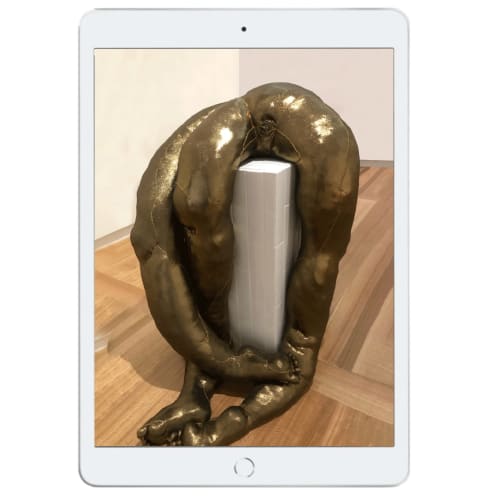“PORTRAIT23: Identity” is the National Portrait Gallery’s newest exhibition, marking the institution’s third decade.
In it, 23 Australian artists and collectives were invited to create new works that expand on and transcend conventional notions of portraiture. At Thursday’s media launch, Sandra Bruce, NPG director of collection and exhibitions, said that when donor Tim Fairfax agreed to back the exhibition, he challenged the gallery’s curators “to do something exciting“. The result was an exploration, she said, of where contemporary art practices could intersect or collide with portraiture and that the artists commissioned had risen to the challenge.
To be sure, some of them are well-known artists to be featured in the Archibald and Darling portrait prizes, but others who would not consider themselves to be portraitists expressed themselves in sculptural installations sculptural and ephemeral installations, some of them outside the gallery, taking, Bruce said, “overt figures to covertly conceptual”.
Two large-scale new works will be seen on the gallery’s exterior – a floating double-portrait by street artist Baby Guerrilla on the NPG’s exterior cantilevered architectural feature at the entrance, and Alison Alder’s monumental screen-printed poster series “Some Women you May Not Know” will take over one side of the forecourt.
During a walk-though, several contrasting “portraits” caught my eye. Taryn Gill’s work “Limber”, an “obstructed, multi limbed” self-portrait, explores psychoanalytic ideas and involves the artist’s personal history and competitive dance and calisthenics.
Three-dimensional portraits of community are seen in sculptures made with recycled woollen blankets, wool, cotton and feathers made by Yarrenyty Arltere artists in 2022. “Happy Australian”, by Thai-born artist, Viploo Srivilasa, blends European historical figurines, Asian decorative practices and contemporary culture to explore and cross cultural and migration experiences.
And Abdul Abdullah’s “Watched but not seen and surveilled“ explores his Muslim/Malay/Indonesian and convict/settler Australian heritage through his imagined “were-tiger” people of folklore who were shapeshifters and became tigers. “I know there will be lively debate,” Bruce said, “but it will get us talking about how portraiture has evolved.”
“Portrait23: Identity”, National Portrait Gallery, until June 18.


